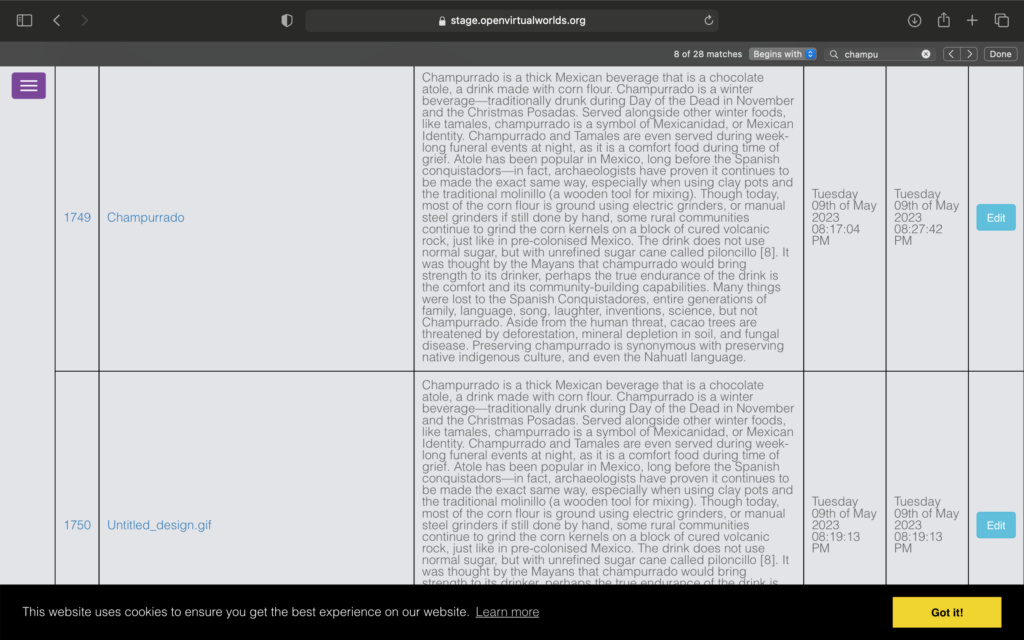A story of Resilience and Mexican Identity
What is Champurrado?
Champurrado is a thick Mexican beverage that is a chocolate atole, a drink made with corn meal. It tastes of shared trauma and resilience.
Champurrado is a winter beverage—traditionally drunk during Day of the Dead in November and the Christmas Posadas. Served alongside other winter foods, like tamales and pan dulce. Champurrado and tamales are even served during week-long funeral events at night, as it is a comfort food during time of grief.
Mexicanidad
Mexicanidad or Mexican identity is at the center of Champurrado’s survival.
It was thought by the Mayans that champurrado would bring strength to its drinker, perhaps the true endurance of the drink is the comfort and its community-building capabilities. Many things were lost to the Spanish Conquistadores, entire generations of family, language, song, laughter, inventions, science, but not Champurrado. Preserving champurrado is synonymous with preserving native indigenous culture, and even the Nahuatl language.
In Mexico, you often will not find champurrado being sold until the weather begins to drop. However, in areas with large populations of Mexican people in the U.S., champurrado can be found on menus year-round, a tribute to the delicious treat that takes you home without having to travel there. Champurrado not only unites communities, but people with their heritage across borders. In fact, due to immigration patterns and naturalization laws, there are Mexican people in the U.S. who are unable to go back home and their children, though U.S.-born have never met their family, but having foods, like champurrado that have remained unchanged throughout the generations is an inheritance guaranteed for anyone of Mexican Identity anywhere in the world.
Champurrado is a comfort food and a powerful symbol of resilience. Preserving champurrado has been proven to be synonymous with preserving small emblems of Mexican National Identity, little details that let us know we are home.
Recipe
Ingredients:
Water


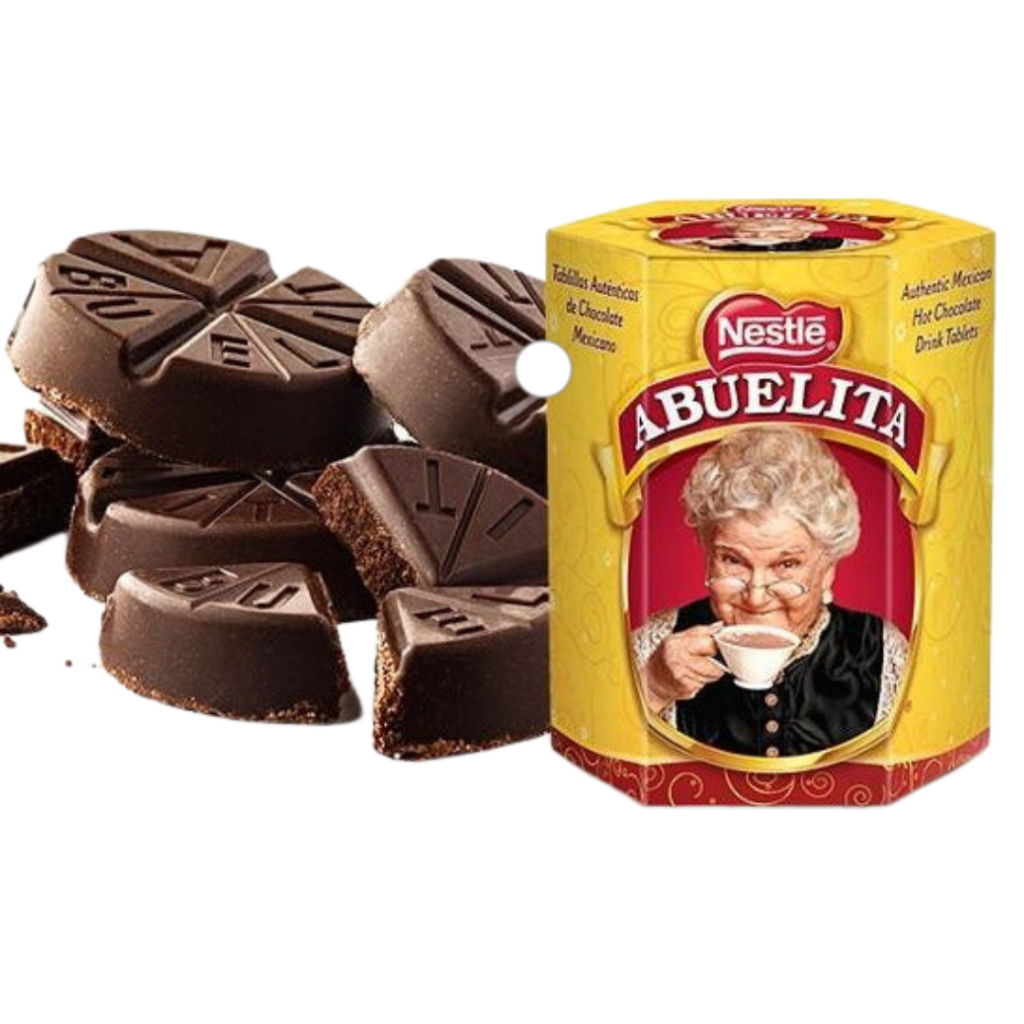
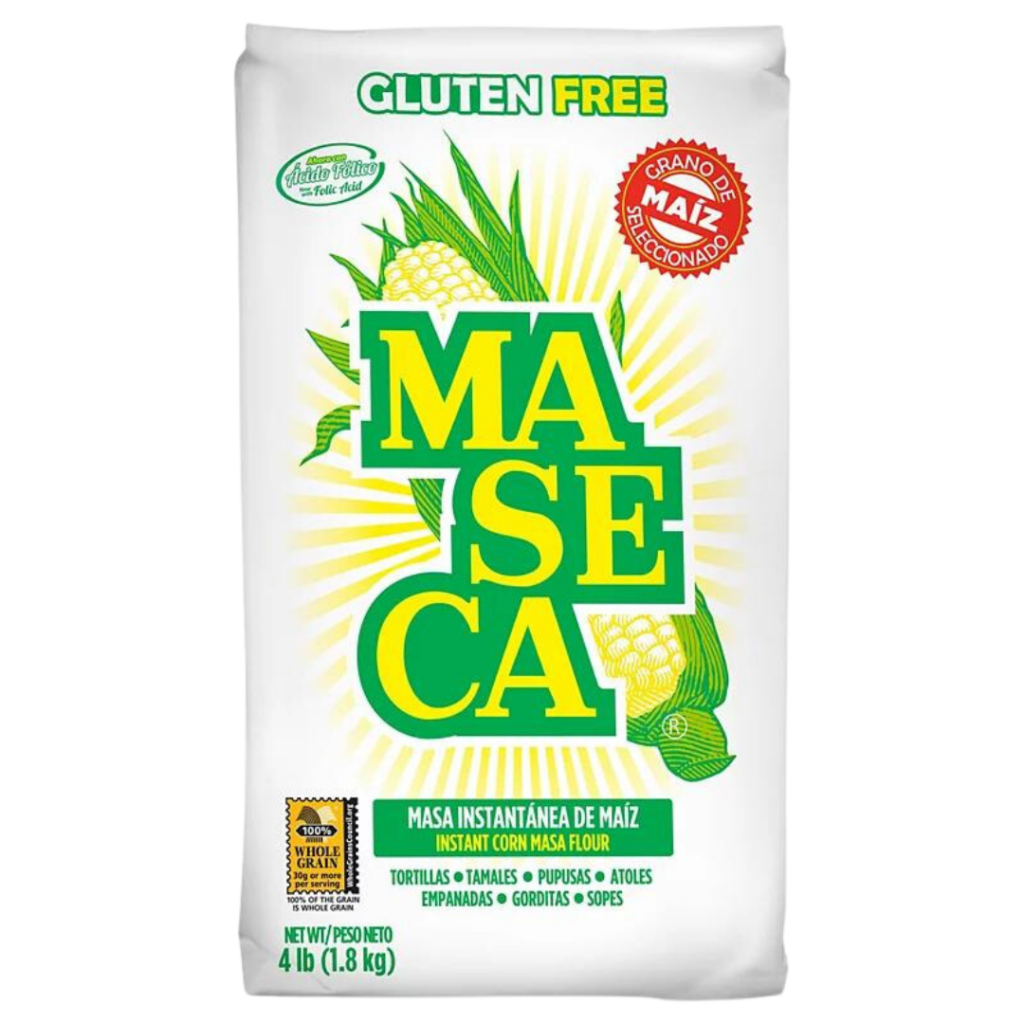
Instructions:
Place 6 cups of water on high heat. Add piloncillo and the cinnamon stick.
Add two whole tablets of Mexican hot chocolate and wait until they are completely dissolved. As shown in the video below, we are using Chocolate Abuelita™️
While you are waiting for the chocolate and piloncillo to completely dissolve, you can dissolve 1 cup of corn meal in 2 cups of water. Make sure there are no clumps.
Stir continuously to help the chocolate and piloncillo dissolve for approximately 30 minutes. You can use a whisk, as shown in the video below, or a traditional molinillo.
Once the chocolate is completely dissolved, remove the cinnamon stick.
Continue to stir constantly, after 6-8 minutes, the liquid should begin to thicken. Keep on heat for another 5 minutes.
Time to serve champurrado! Allow time to cool, as the thick beverage will be very hot.
Champurrado should be accompanied by a hot tamale, pan dulce, or your favorite dessert like this Kahlua & Raisin cake— enjoy!

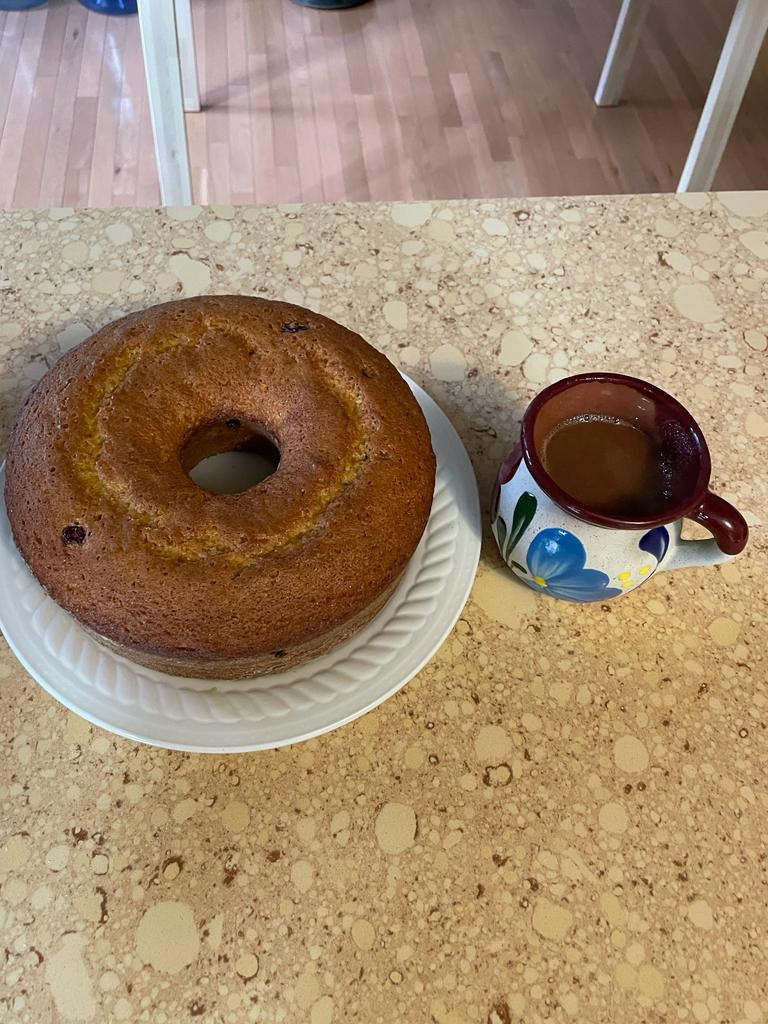
Acknowledgements: shout out to my mom for her Champurrado and baking skills and to my dad for his cinematography.
Event Flyer
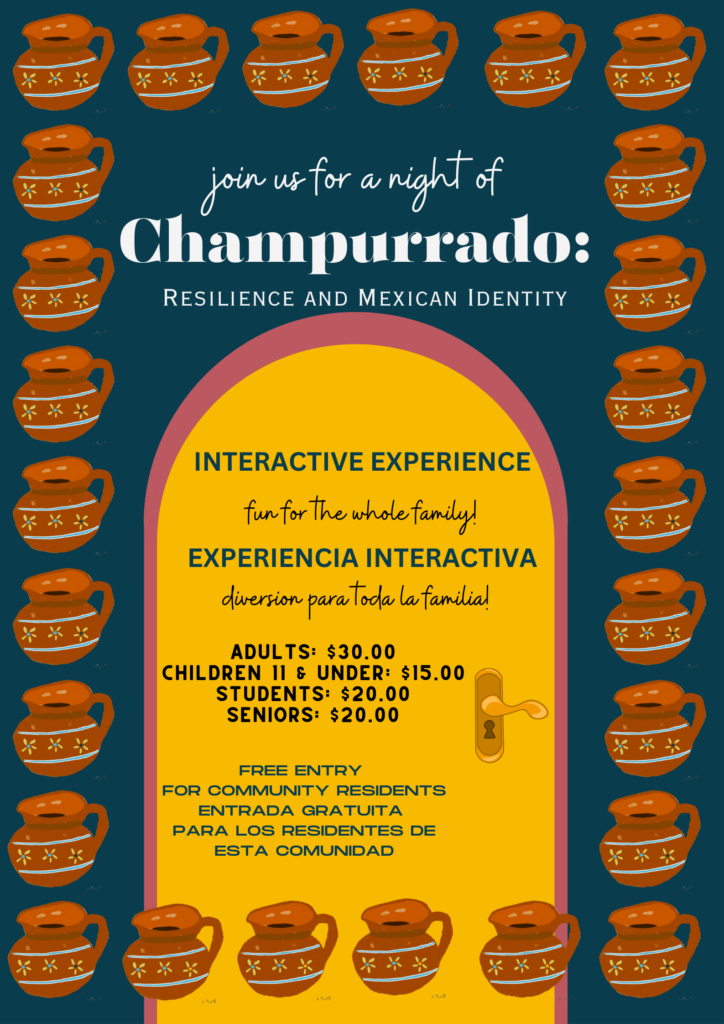
| M | T | W | T | F | S | S |
|---|---|---|---|---|---|---|
| 1 | 2 | 3 | 4 | 5 | 6 | 7 |
| 8 | 9 | 10 | 11 | 12 | 13 | 14 |
| 15 | 16 | 17 | 18 | 19 | 20 | 21 |
| 22 | 23 | 24 | 25 | 26 | 27 | 28 |
| 29 | 30 | 31 | ||||
Interactive Experience
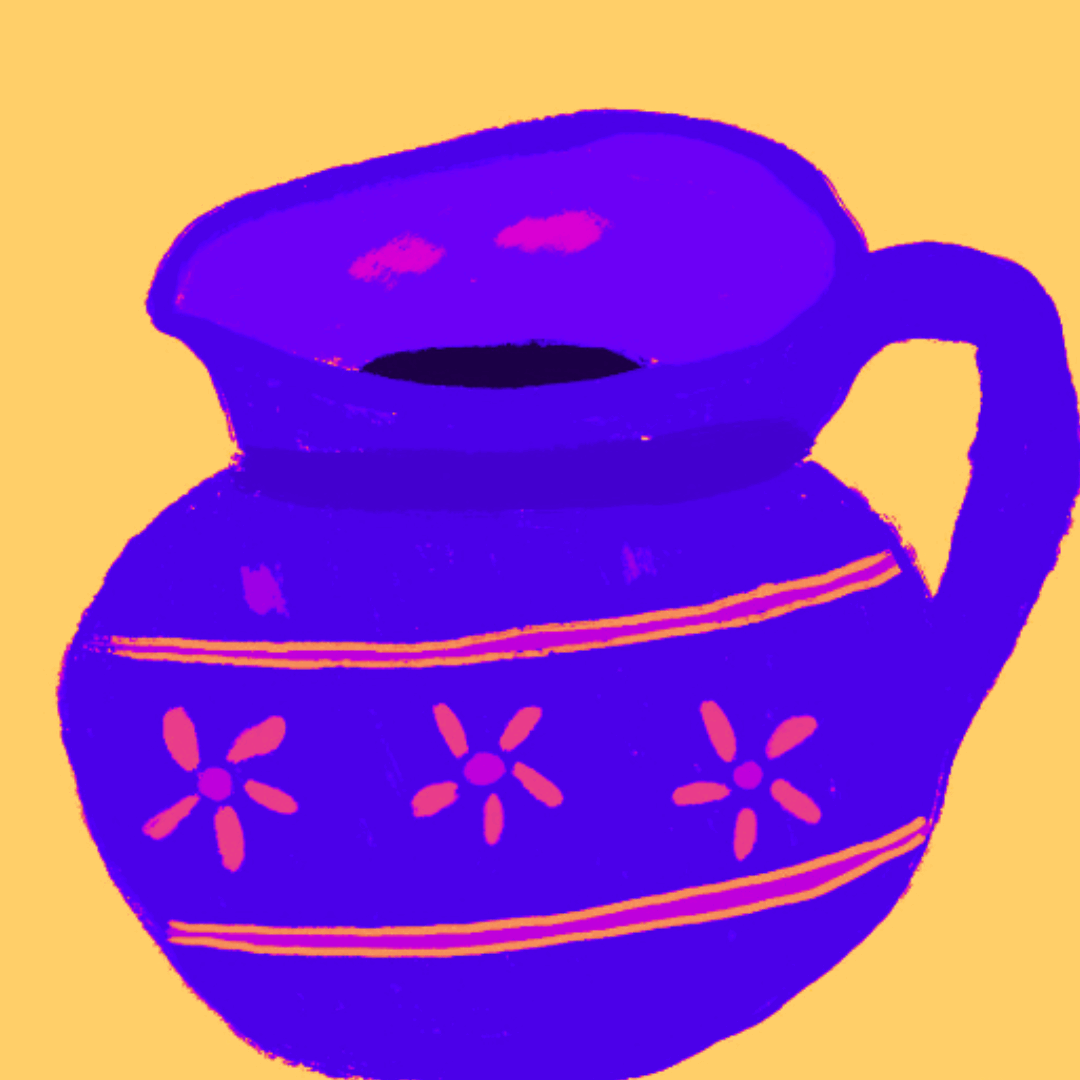
| Location: | Experience: |
| Room A | VR experience, which will simulate the audio, visual, and olfactory senses. |
| Hall A | Dark hallway with 3D printed walls |
| Room B | Immersive projector experience, featuring real documentary videos of farms, cacao productions, and interviews with professionals and locals, alike. The videos above of the process to make champurrado in modern day will play in this room. |
| Room C | Carnival room. A recreation of my grandmother’s backyard traditional kitchen and themed carnival games. |
| Room D | Gift Shop. You can support small artisans by purchasing homemade Mexican goods, such as chocolate, candy, purses, keychains, and other goods. |
| Games in Room C: | Description: |
| The Greatest Grinder | Participants will be met with a real molino or maize grinder handle, where they have to turn the handle (incrementing the difficulty every few turns), there will be a corn visualization in front of every participant, the “corn kernel” will fall off each corn as the participant continues to grind, whomever clears their corn of all its kernels before the other participants, will be crowned the winner. |
| Cacao Pod Prize | Cacao pods will be floating in a giant tub of water, participants have to take a hook and grab a pod within 30 seconds. Each pod will have a prize or a “try again” inside. Participants who win a prize can win free entry for them and a friend, a plush cacao, a gift shop discount, a small chocolate, or a full-size chocolate bar from our gift shop. |
| Whack-a-corn | Participants will receive a mallet, which they will use to whack each corn that pops up from the machine. This game is similar to whack-a-mole, a popular children’s game. |
Traditional Kitchen

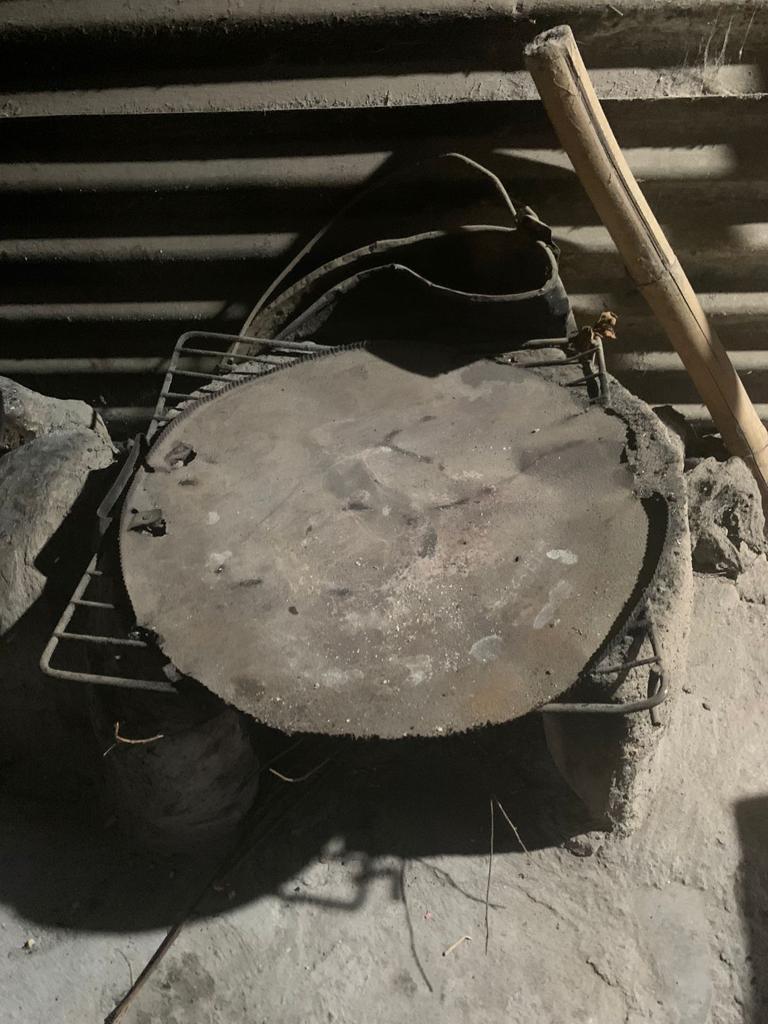
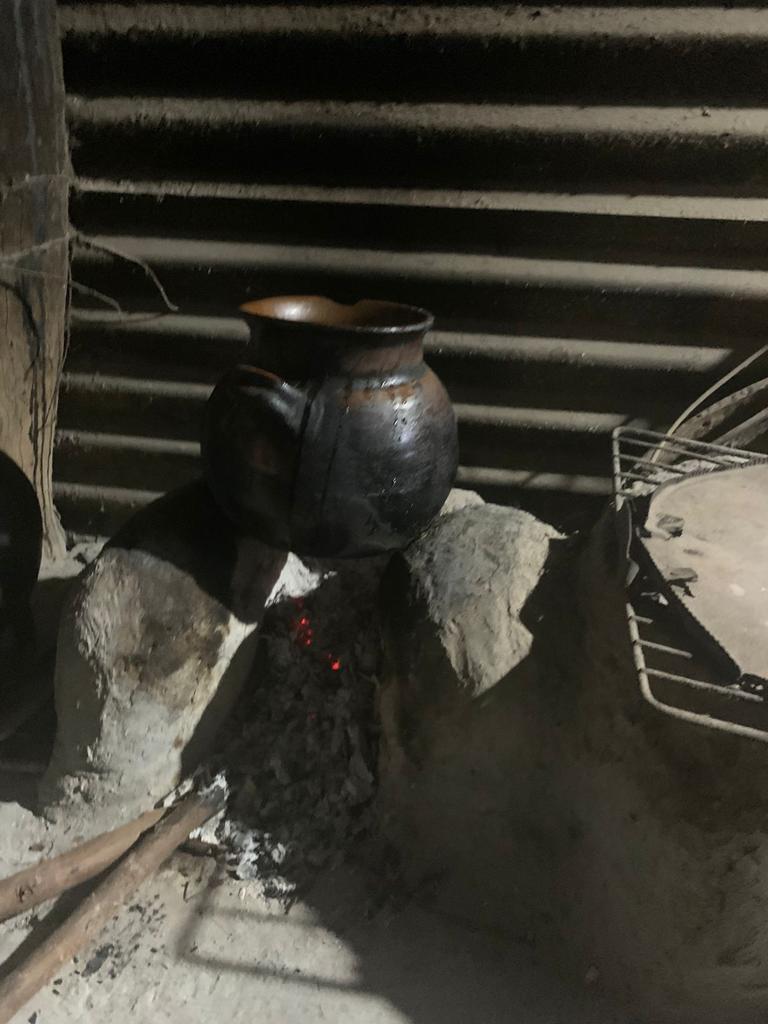
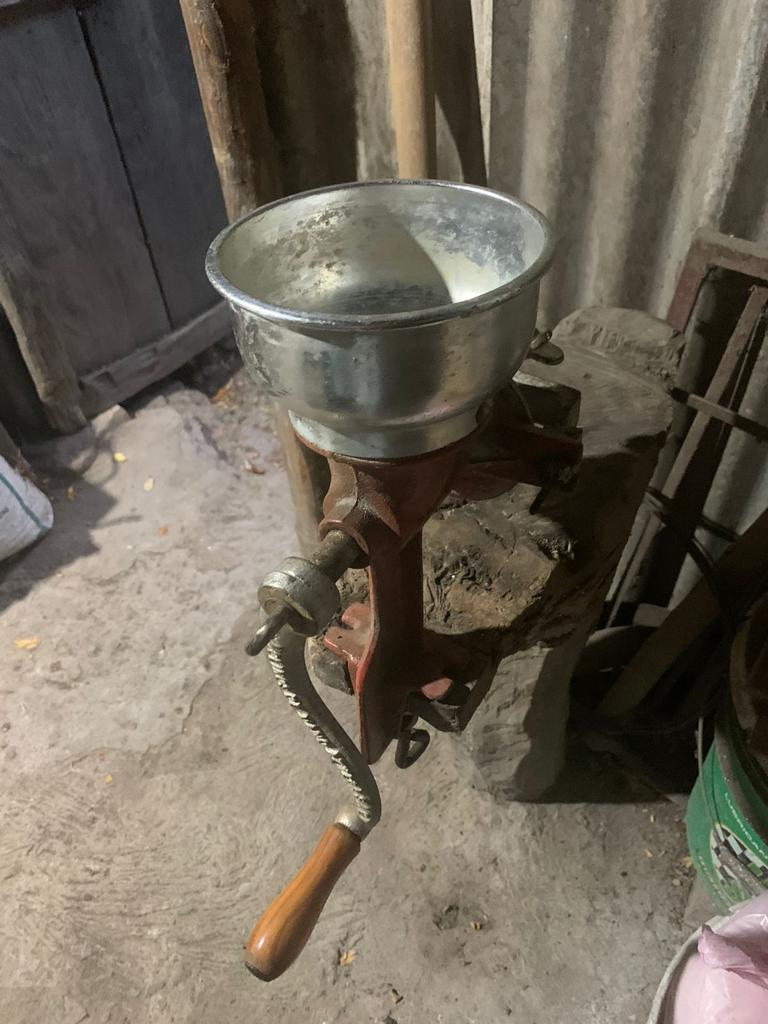

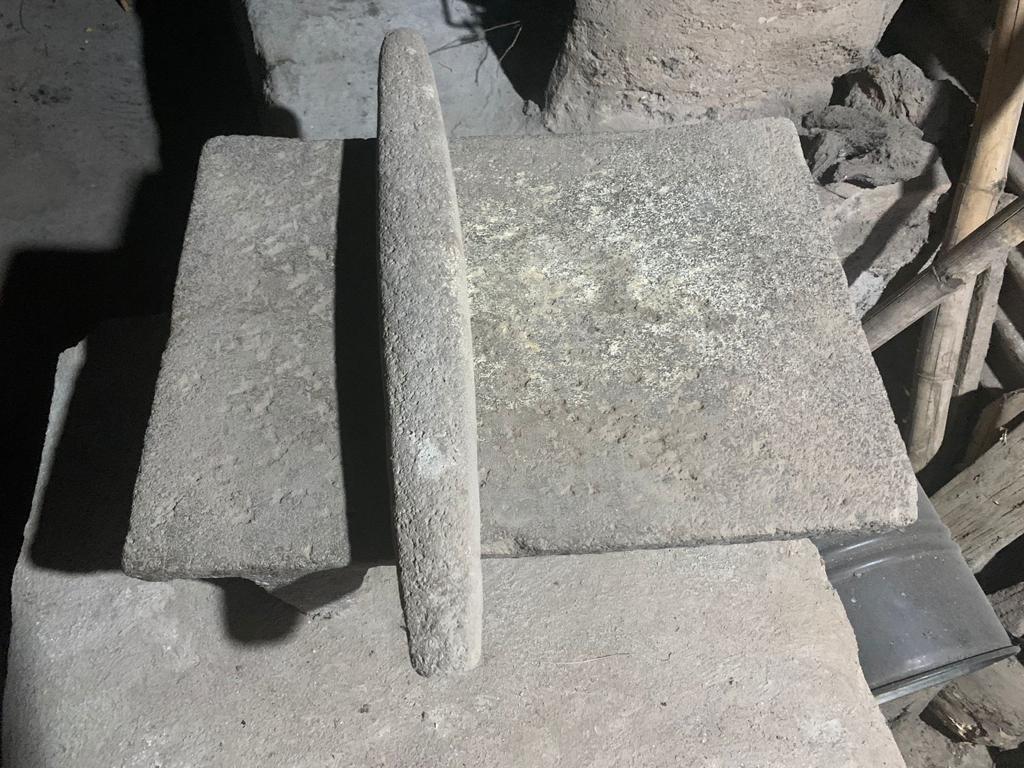
Descriptions:
Clay Ovens -> used for cooking, pots are laid on the opening of clay ovens atop hot coals. Can also be used for baking.
Metate -> A stone tool used for grinding items such as nixtamalized corn
Steel Grinder -> Modern tool used to grind nixtamalized corn (or other grains). It is a replacement tool for the more manual and grueling metate.
Threats to Cacao
According to David Olvera from Conservation International, Mexico has lost more than 50 percent of its cacao production. This is due to the following:
- Mineral-depleted soil as a result of over-planting palm trees for palm oil production.
- Deforestation of cacao trees to pave way for maize, palm trees, and livestock.
- Frosty pod rot, a fungal disease affecting cacao trees.
Unsustainable Corn Production
Current farming practices for maize are unsustainable and can be cause for unsafe drinking water in local communities. In fact, harmful fertilizer chemicals as well as the fossil fuel energy used in corn production can result in negative impacts such as:
- Eutrophication -> excessive nutrients due to land run-off, resulting in over-growth of plant life.
- Carbon emissions
- Land degradation -> polluting and depleting soil quality, usually caused by humans.
- Reduction of freshwater resources
- Depletion of biodiversity
Representation in Art
Metates and maize were common motifs in the work of Mexican Painter Diego Rivera.
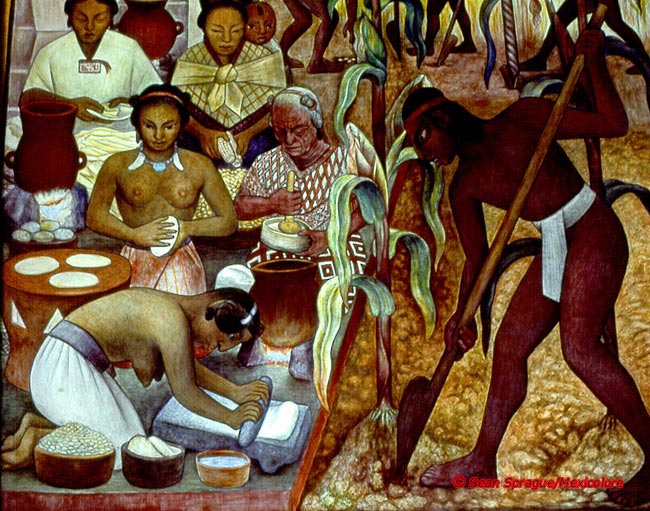

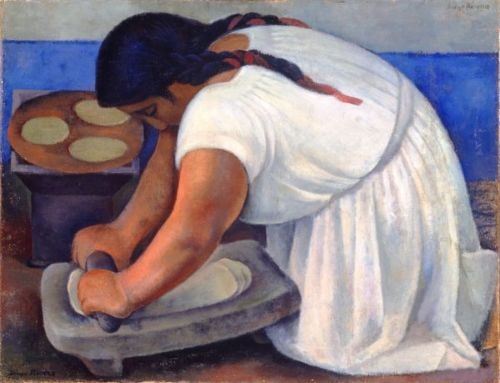
“I know now that he who hopes to be universal in his art must plant in his own soil . . . The secret of my best work is that it is Mexican.”
Diego Rivera

Resources:
- “Sweet News: Cacao Making a Comeback in Mexico,” World Cocoa Foundation, Feb. 20, 2019. https://www.worldcocoafoundation.org/blog/sweet-news-cacao-making-a-comeback-in- mexico/
- “Why is palm oil bad for the environment?,” The Ecosia Blog, Apr. 12, 2019. https://blog.ecosia.org/why-palm-oil-bad-environment-indonesia-sumatra-orangutan-habitats- ecosia/#:~:text=Over%2025%25%20of%20Indonesia
- Amnesty International, “Palm oil: Global brands profiting from child and forced labour,” Amnesty.org, Nov. 30, 2016. https://www.amnesty.org/en/latest/news/2016/11/palm-oil-global- brands-profiting-from-child-and-forced-labour/
- “The Momentum | The Social Impact of Corn Production,” www.themomentum.com. https://www.themomentum.com/articles/the-social-impact-of-corn- production#:~:text=The%20agrochemicals%20produced%20from%20harmful
- “Soil Quality Monitoring – Marlborough District Council,” www.marlborough.govt.nz. https://www.marlborough.govt.nz/environment/land/soils/soil-quality- monitoring#:~:text=Mineralisable%20nitrogen%20is%20a%20useful
Proof I uploaded my 3 heritages to the archive website (they are not showing up on the map, and I don’t know why, as I did add the latitude and longitude for each).


